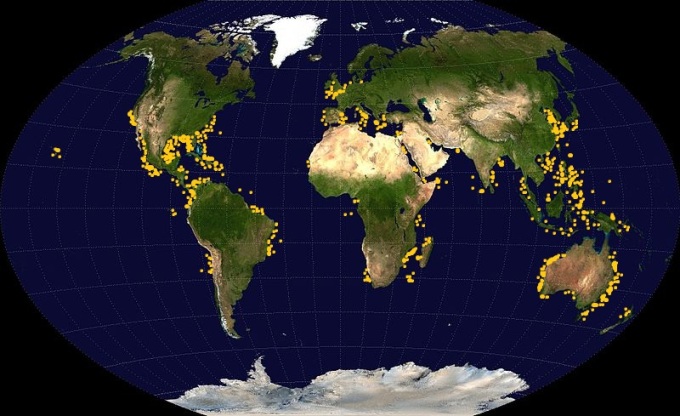
Where do you find these little creatures?
Habitat and Geography
Alpheus randalli is a marine species found in shallow tropical and subtropical waters. They can be found in just about any area that meets these conditions. The Alpheus genus has been found in the Gulf of Mexico, Carribean Sea, the Red Sea, the Persian Gulf and the Great Barrier Reef (Karplus 1999). Off the coasts of Florida, Japan, Brazil, South Africa, Fiji, Hawaii, Central America and many others are other places these Pistol Shrimp have been found (Mathews 2009). These areas have very high biodiversity and are home to other organisms like the Goose Barnacle, the Moreton Bay Bug, marine Actinomycetes, and the Great Seahorse.
Members of the Alpheus genus are all benthic. They
rarely, if ever, leave the bottom to swim (Anker, et. al. 2006). Alpheid shrimp live
in burrows that they have constructed. They are made in silt to
sandy ocean bottoms. They can be made with mud, stone or pieces
of coral (Karplus 1999). These subterranean burrows tend to be
shallow and irregularly branching (Zeng and Jaafar 2012). These
burrows can be found anywhere from the intertidal zone to depths
of over 50 meters. They are also found in many different
habitats like mud flats and sea-grass beds. The burrows
generally have an asymmetrical opening with sandy floors. The
walls and roof have bits of coral in them to prevent collapse.
There is also a small ramp near the opening that the goby fish,
which forms a symbiotic relationship with Alpheus randalli,
often uses as a lookout (Karplus 1999).
To learn more about this symbiotic relationship, let’s move
along to the Interactions page!
